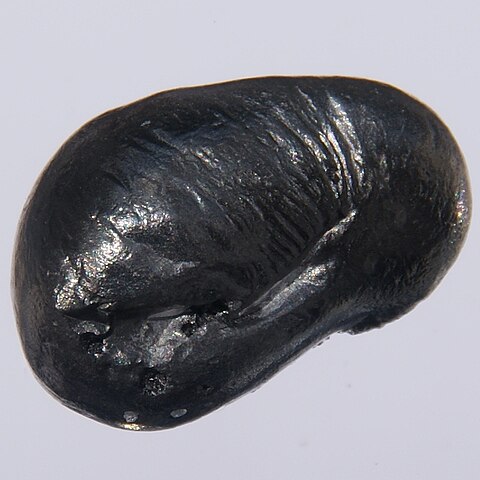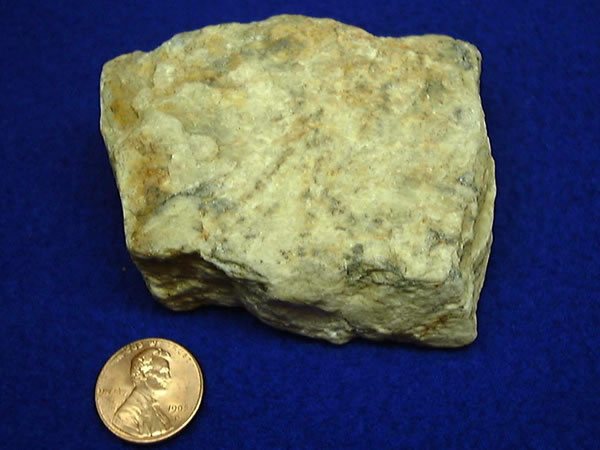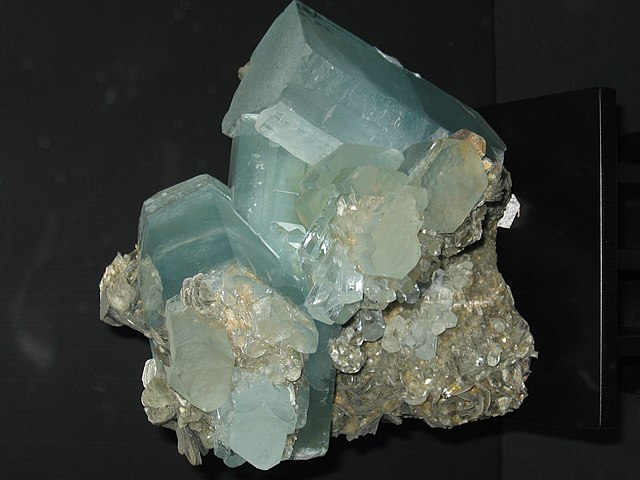Beryllium is an essential element when it comes to industrial processes. It is an incredibly lightweight and versatile material with unique properties and a wide range of uses, from aerospace to X-ray machines.
It is also a highly hazardous material if handled incorrectly.
The chemical symbol for beryllium is Be and its atomic number is 4. Beryllium is the lightest of all the metals on the periodic table, with an atomic weight of 9.012 g/mol and an atomic structure made up of 4 protons, 4 neutrons, and 4 electrons.
Its melting point is 1287°C, and its boiling point is 2970°C. It is a very dense material, with a density of 1.85 g/cm3.
Introduction
In terms of physical properties, beryllium is a silvery-white metal with a slight pink tinge. It has a very hard and brittle structure and is highly resistant to corrosion. Beryllium also has the highest thermal and electrical conductivity of all metals.
Beryllium is used in a variety of applications across a range of industries. In aerospace, it is used in the production of aircraft structures due to its lightweight and strength. It is also used in the production of nuclear reactors, providing structural support and insulation.

SONY DSC
In electronics, beryllium is used in the production of semiconductors, transistors, and contact points. Finally, beryllium is used in the production of X-ray machines due to its ability to absorb X-rays.
Despite its many benefits, there are also some serious hazards associated with beryllium. Berylliosis is a chronic lung disease caused by the inhalation of beryllium particles or dust and can lead to significant respiratory problems. Beryllium is also a known carcinogen and can cause eye and skin irritation if not handled correctly.
This guide will provide an overview of beryllium's properties, uses, and hazards in order to help you better understand this unique material.
Chemical Properties
Beryllium is a chemical element with atomic number four and atomic weight nine. It is a very lightweight element that can be found in nature in the form of beryllium compounds. Its atomic structure consists of four electrons, one proton, and one neutron. Beryllium has a melting point of 1278 degrees Celsius and a boiling point of 2970 degrees Celsius. It is known for its high density, with a specific gravity of 1.85.
The color of beryllium is usually a silvery-white metal. It is known for its hardness, with a Mohs hardness rating of 6-7. Its thermal conductivity is quite high, with a thermal conductivity of 416 W/mK. Its electrical conductivity is also high, with a conductivity of 67 MS/m.
Beryllium is considered to be a rare element and is not found in large quantities in nature. It is most commonly found in combination with other minerals and is usually mined from bertrandite ore. In its pure form, it is usually alloyed with other metals to create a stronger metal.
Beryllium is used in many industries because of its unique properties. It is most commonly used in the aerospace industry for its light weight and strength. It is also used in nuclear reactors because of its ability to absorb neutrons and in electronics because of its electrical and thermal conductivity. Beryllium is also used in X-ray machines because it is an excellent absorber of X-rays.
Although beryllium has many uses, it also carries some potential hazards. Inhalation of beryllium dust can lead to berylliosis, a lung disease. Beryllium can also be carcinogenic if it is inhaled in large quantities. In addition, contact with beryllium can cause skin and eye irritation and can damage the liver and kidneys.
In conclusion, beryllium is a unique element with many properties and uses. Its atomic number is four, its atomic weight is nine, and it has a melting point of 1278 degrees Celsius and a boiling point of 2970 degrees Celsius. Its density is 1.85 and its color is usually silvery-white. It is used in the aerospace industry, in nuclear reactors, in electronics and in X-ray machines. Finally, it carries potential hazards such as berylliosis, carcinogenic risks, and skin and eye irritation.
Physical Properties
When it comes to the physical properties of beryllium, this metal is a lightweight and rigid metal with a light grayish-white color and a shining silver luster. It has a density of 1.85 grams per cubic centimeter, which is quite light for a metal.
It is also a very hard and tough metal, with a Mohs hardness rating of 6.5, which is higher than that of pure aluminum.
When it comes to thermal conductivity, beryllium has the highest thermal conductivity of any non-metal, with it being almost three times that of copper and aluminum. It also has a high electrical conductivity, with it being about three times that of aluminum and almost twice that of copper.
The melting point of beryllium is 1287 degrees Celsius (2349.6 degrees Fahrenheit) and the boiling point is 2970 degrees Celsius (5378 degrees Fahrenheit).
When it comes to the physical properties of beryllium, it is also a very ductile metal that can be easily formed into various shapes. It can also be easily rolled, cut, drilled, and pressed into various shapes and sizes. The metal's excellent tensile strength and hardness, combined with its low density, make it an ideal material for use in aerospace applications.

Beryllium also has excellent corrosion-resistance properties, with it being able to resist corrosion in many different environments, including seawater, acidic solutions, and even chlorine-based solutions.
This makes it a great choice for many industrial applications, as it is able to withstand the corrosive effects of many different environments.
Beryllium is also a very good electrical insulator, which makes it an ideal choice for use in electronic components, including circuit boards and other components. It is also an excellent thermal conductor, which makes it a great choice for heat sinks and other applications that require thermal management.
Overall, the physical properties of beryllium make it a great choice for many different applications, from aerospace to electronics.
With its excellent tensile strength and hardness, low density, excellent corrosion resistance, and excellent electrical and thermal conductivity, beryllium is a great material for a wide variety of uses.
Uses of Beryllium
Beryllium is a rare, lightweight metal that is used in a variety of industries due to its unique properties. Its light weight, extremely high melting point, and excellent thermal conductivity make it invaluable in the aerospace, nuclear, electronics, and x-ray industries.
In the aerospace industry, beryllium is used for its strong, lightweight properties. It is an excellent substitute for other metals such as aluminum and titanium because it is much lighter. This makes it ideal for aircraft and spacecraft components that need to be light yet strong.
The nuclear industry also utilizes beryllium for its high melting point. It is used as a moderator in some nuclear reactors, as it can absorb neutrons without breaking down. Beryllium is also a good reflector of neutrons, helping to maintain control of the reaction in the reactor.
Beryllium is also a valuable material in the electronics industry. Its excellent thermal conductivity makes it an excellent choice for cooling systems in computers and other electronic devices. Its ability to dissipate heat quickly makes it a great choice for a variety of electronic components.
Beryllium is also used in the manufacturing of X-ray machines. Its high atomic number makes it a great material to absorb X-rays. It is used in the X-ray tube window to absorb the rays without passing them through to the patient.
Overall, beryllium is an important material for a variety of industries due to its unique properties, such as its high melting point, excellent thermal conductivity, and its ability to absorb X-rays and neutrons.
Its light weight and strength make it a desirable material for aerospace applications, while its atomic structure makes it a great choice for nuclear reactors and X-ray machines.
Hazards Associated with Beryllium
Beryllium is a highly toxic element and can have serious health consequences if not handled properly. Exposure to beryllium can cause a number of health issues, including berylliosis, carcinogenic risks, and eye and skin irritation.
It is important to understand the hazards associated with beryllium in order to protect yourself and those around you.
Berylliosis is a lung disease caused by the inhalation of beryllium particles. Symptoms of berylliosis can include pulmonary fibrosis, shortness of breath, coughing, and chest pain.
It can also lead to severe respiratory problems, as well as other serious health issues. Long-term exposure to beryllium can lead to permanent lung damage. In extreme cases, it can be fatal.

In addition to berylliosis, beryllium can also pose a risk of carcinogenic diseases. Studies have found that long-term exposure to beryllium can increase the risk of developing certain types of cancer. This includes lung cancer, as well as other cancer types.
Inhalation of beryllium dust or smoke can also cause eye and skin irritation. Exposure to beryllium can cause redness, itching, and burning of the skin, as well as irritation and burning of the eyes. In extreme cases, this can lead to permanent vision damage or discoloration of the skin.
It is also important to note that beryllium is an environmental hazard as well. Beryllium can leach into soil and water, and can contaminate plants and animals. For this reason, it is important to dispose of any beryllium wastes properly.
Facts
Beryllium is a chemical element with the symbol Be
Beryllium has the atomic number 4.
Named after beryl, a semiprecious mineral, from which it was first isolated
It is a steel-gray, strong, lightweight and brittle alkaline earth metal.
Notable gemstones high in beryllium include beryl and chrysoberyl.
Beryllium constitutes about 0.0004 percent by mass of Earth's crust.
The world's annual beryllium production of 220 tons is usually manufactured by extraction from the mineral beryl
This is a difficult process because beryllium bonds strongly to oxygen.
Within the cores of stars, beryllium is depleted as it is fused into heavier elements
The Sun has a concentration of 0.1 parts per billion (ppb) of beryllium
Beryllium is found in over 100 minerals,but most are uncommon to rare
Trace amounts of 9Be are found in the Earth's atmosphere
The concentration of beryllium in sea water is 0.2–0.6 parts per trillion.
The two main ores of beryllium, beryl and bertrandite, are found in Argentina, Brazil, India, Madagascar, Russia and the United States.
Total world reserves of beryllium ore are greater than 400,000 tonnes
Currently the United States, China and Kazakhstan are the only three countries involved in the industrial-scale extraction of beryllium
The mineral beryl, which contains beryllium, has been used at least since the Ptolemaic dynasty of Egypt
Louis-Nicolas Vauquelin discovered beryllium
Friedrich Wöhler was one of the men who independently isolated beryllium
one of the most important applications of beryllium is in radiation windows for X-ray tubes
I was used in the construction of the James Webb Space Telescope.
Beryllium is non-magnetic.
Approximately 35 micrograms of beryllium is found in the average human body, an amount not considered harmful.
Information
| Beryllium | |||||||||||||||||||||||||||||||
|---|---|---|---|---|---|---|---|---|---|---|---|---|---|---|---|---|---|---|---|---|---|---|---|---|---|---|---|---|---|---|---|
| Pronunciation | /bəˈrɪliəm/ |
||||||||||||||||||||||||||||||
| Appearance | white-gray metallic | ||||||||||||||||||||||||||||||
| Standard atomic weight Ar°(Be) | |||||||||||||||||||||||||||||||
|
|||||||||||||||||||||||||||||||
| Beryllium in the periodic table | |||||||||||||||||||||||||||||||
| Atomic number (Z) | 4 | ||||||||||||||||||||||||||||||
| Group | group 2 (alkaline earth metals) | ||||||||||||||||||||||||||||||
| Period | period 2 | ||||||||||||||||||||||||||||||
| Block | s-block | ||||||||||||||||||||||||||||||
| Electron configuration | [He] 2s2 | ||||||||||||||||||||||||||||||
| Electrons per shell | 2, 2 | ||||||||||||||||||||||||||||||
| Physical properties | |||||||||||||||||||||||||||||||
| Phase at STP | solid | ||||||||||||||||||||||||||||||
| Melting point | 1560 K (1287 °C, 2349 °F) | ||||||||||||||||||||||||||||||
| Boiling point | 2742 K (2469 °C, 4476 °F) | ||||||||||||||||||||||||||||||
| Density (near r.t.) | 1.85 g/cm3 | ||||||||||||||||||||||||||||||
| when liquid (at m.p.) | 1.690 g/cm3 | ||||||||||||||||||||||||||||||
| Critical point | 5205 K, MPa (extrapolated) | ||||||||||||||||||||||||||||||
| Heat of fusion | 12.2 kJ/mol | ||||||||||||||||||||||||||||||
| Heat of vaporization | 292 kJ/mol | ||||||||||||||||||||||||||||||
| Molar heat capacity | 16.443 J/(mol·K) | ||||||||||||||||||||||||||||||
Vapor pressure
|
|||||||||||||||||||||||||||||||
| Atomic properties | |||||||||||||||||||||||||||||||
| Oxidation states | 0,[2] +1,[3] +2 (an amphoteric oxide) | ||||||||||||||||||||||||||||||
| Electronegativity | Pauling scale: 1.57 | ||||||||||||||||||||||||||||||
| Ionization energies |
|
||||||||||||||||||||||||||||||
| Atomic radius | empirical: 112 pm | ||||||||||||||||||||||||||||||
| Covalent radius | 96±3 pm | ||||||||||||||||||||||||||||||
| Van der Waals radius | 153 pm | ||||||||||||||||||||||||||||||
| Other properties | |||||||||||||||||||||||||||||||
| Natural occurrence | primordial | ||||||||||||||||||||||||||||||
| Crystal structure | hexagonal close-packed (hcp) | ||||||||||||||||||||||||||||||
| Speed of sound thin rod | 12,890 m/s (at r.t.) | ||||||||||||||||||||||||||||||
| Thermal expansion | 11.3 µm/(m⋅K) (at 25 °C) | ||||||||||||||||||||||||||||||
| Thermal conductivity | 200 W/(m⋅K) | ||||||||||||||||||||||||||||||
| Electrical resistivity | 36 nΩ⋅m (at 20 °C) | ||||||||||||||||||||||||||||||
| Magnetic ordering | diamagnetic | ||||||||||||||||||||||||||||||
| Molar magnetic susceptibility | −9.0×10−6 cm3/mol | ||||||||||||||||||||||||||||||
| Young's modulus | 287 GPa | ||||||||||||||||||||||||||||||
| Shear modulus | 132 GPa | ||||||||||||||||||||||||||||||
| Bulk modulus | 130 GPa | ||||||||||||||||||||||||||||||
| Poisson ratio | 0.032 | ||||||||||||||||||||||||||||||
| Mohs hardness | 5.5 | ||||||||||||||||||||||||||||||
| Vickers hardness | 1670 MPa | ||||||||||||||||||||||||||||||
| Brinell hardness | 590–1320 MPa | ||||||||||||||||||||||||||||||
| CAS Number | 7440-41-7 | ||||||||||||||||||||||||||||||
| History | |||||||||||||||||||||||||||||||
| Discovery | Louis Nicolas Vauquelin (1798) | ||||||||||||||||||||||||||||||
| First isolation | Friedrich Wöhler & Antoine Bussy (1828) | ||||||||||||||||||||||||||||||
|
|||||||||||||||||||||||||||||||
